How to Fertilize Pecan Trees: Secrets to Thriving Orchards
- April 8, 2024
- 0 comment
Discover proven techniques on how to fertilize pecan trees, ensuring a lush, fruitful orchard. Maximize growth and yield with expert tips. Growing pecan trees can be a rewarding endeavor, offering the dual benefits of a stunning landscape feature and a bountiful harvest of delicious nuts. Yet, achieving a thriving orchard requires more than just planting and waiting. It demands knowledge, care, and the right fertilization strategies. We delve deep into the expert techniques that ensure your pecan trees not only survive but flourish.

From understanding the nutrient needs of your trees to timing the application of fertilizers perfectly, this guide covers everything you need to turn your pecan orchard into the envy of your neighbors. Whether you’re a seasoned gardener or a first-time tree planter, you’ll find insights here to maximize growth, health, and yield, ensuring your efforts today pay off with an abundant harvest tomorrow.
Table of Contents
- Understanding Pecan Trees and Their Needs
- The Right Time to Fertilize
- Selecting the Proper Fertilizer
- A Step-by-Step Guide on How to Fertilize Pecan Trees
- Fertilization Schedule: From Young Trees to Maturity
- Optimal Planting Practices
- Pruning Techniques for Healthy Growth and Productivity
- Common Fertilization Mistakes to Avoid
- Advanced Orchard Management Tips
- Conclusion
- FAQs
Understanding Pecan Trees and Their Needs
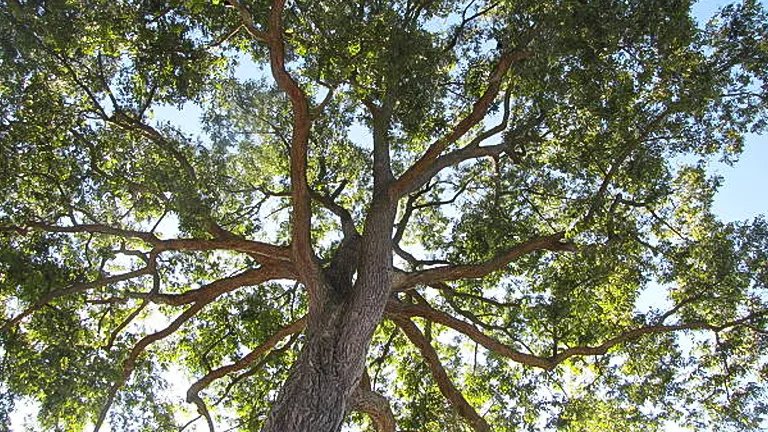
Pecan trees (Carya illinoinensis), revered for their bountiful harvests of rich, buttery nuts, embody resilience and productivity, with some living and bearing fruit for over 300 years. Native to the floodplains of North America, these trees have adapted to a wide range of environmental conditions, but they thrive best in deep, well-drained soils with a pH ranging from 6.0 to 6.5, where their roots can penetrate deeply.
Nutritional Requirements
Pecan trees are indeed heavy feeders, with their nutritional requirements scaling significantly as they grow from saplings to mature, fruit-bearing giants. The balanced intake of nitrogen (N), phosphorus (P), and potassium (K) is vital for their overall health, growth, and nut production. However, pecan trees have additional, nuanced nutritional needs that are pivotal for their optimal performance:
- Nitrogen (N) is crucial for leaf growth and chlorophyll production, directly influencing photosynthesis and, subsequently, energy availability for nut development.
- Phosphorus (P) supports the development of roots and plays a vital role in energy transfer within the tree, essential for the growth and maturation of nuts.
- Potassium (K) enhances water use, disease resistance, and overall tree vigor, contributing to the mechanical strength and thickness of cell walls.
Beyond these macro-nutrients, pecan trees also require specific micro-nutrients in smaller quantities:
- Magnesium (Mg) is a central component of chlorophyll and is necessary for photosynthesis and enzyme activation.
- Zinc (Zn) is critical for the synthesis of plant hormones and enzymes and plays a key role in leaf and shoot development. Pecan trees are particularly susceptible to zinc deficiency, manifesting as rosette disease, where leaves become small, narrow, and bunched at the shoot tips.
- Iron (Fe) is necessary for chlorophyll synthesis and functions in several enzyme systems within the plant.
Nutrient deficiencies can severely impact tree health, growth, and nut production. Early recognition of signs such as yellowing leaves (chlorosis) for iron and zinc deficiencies, and slow growth or reduced nut size for nitrogen deficiency, is crucial for the timely application of the appropriate fertilizers or soil amendments.
Nutritional Requirements Table
To help visualize the nutritional demands, here’s a simplified table outlining the essential nutrients and their functions:
| Nutrient | Function in Pecan Trees | Deficiency Signs |
|---|---|---|
| Nitrogen (N) | Leaf growth, chlorophyll production | Reduced growth, pale green leaves |
| Phosphorus (P) | Root development, energy transfer | Stunted growth, dark green leaves |
| Potassium (K) | Water use, disease resistance | Yellowing leaf edges, weak branches |
| Magnesium (Mg) | Photosynthesis, enzyme activation | Interveinal chlorosis in older leaves |
| Zinc (Zn) | Hormone and enzyme synthesis | Rosette disease, bunched leaves |
| Iron (Fe) | Chlorophyll synthesis | Chlorosis, particularly in new leaves |
Scientific Analysis and Advanced Insights
For the scientifically inclined and those seeking to optimize their pecan orchards, understanding the quantifiable aspects of these nutrients can be enlightening. For instance, mature pecan trees can remove approximately 50 to 70 pounds of nitrogen per acre from the soil annually, depending on the yield. Zinc applications, critical for preventing rosette disease, are most effective when applied as a foliar spray at a concentration of 0.5 to 2 pounds of actual zinc per acre, depending on the formulation and tree size.
Soil tests should ideally be conducted annually in commercial settings or every 2-3 years for smaller orchards to monitor nutrient levels and pH. These tests provide a baseline for targeted fertilization and soil amendment practices, ensuring that each tree receives what it needs for optimal health and productivity.
The Right Time to Fertilize
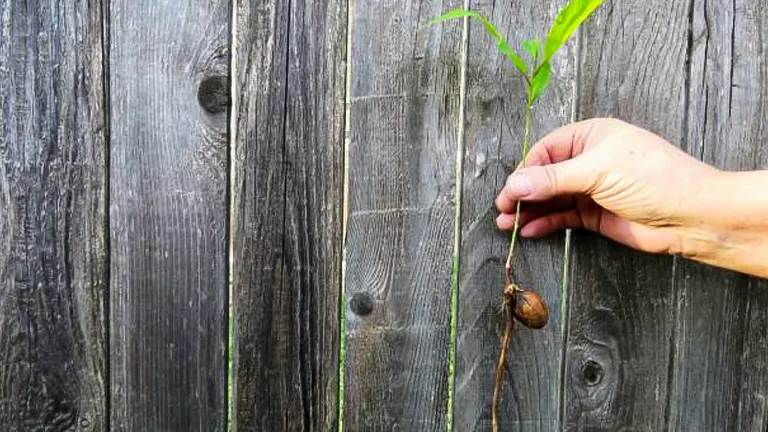
Understanding the precise timing for fertilizing pecan trees is crucial for maximizing their health and productivity. This timing must be meticulously aligned with the trees’ phenological stages—distinct phases in their growth cycle influenced by environmental conditions. By synchronizing fertilization with these stages, nutrients are provided when trees are most receptive, supporting vital processes like leaf development, flowering, and nut formation.
Key Growth Stages and Fertilization Windows
Pecan trees progress through several growth stages each year, from dormancy in winter to active growth in spring and summer, culminating in nut maturation and harvest in fall. Each stage has specific nutritional demands, making the timing of fertilizer application critical.
- Bud Break and Leaf Development: Early spring, as soil temperatures rise above 65°F (approximately late February to early March in most pecan-growing regions), marks the start of active growth. Fertilization at this stage supports the rapid development of foliage, which is crucial for photosynthesis and energy production.
- Flowering and Nut Development: By early summer (May to June), the focus shifts to supporting flowering and the initial stages of nut development. A balanced supply of nutrients, especially phosphorus and potassium, is essential for fruit set and early nut growth.
- Nut Maturation: While primary fertilization should conclude by late summer to avoid stimulating new growth that could be damaged by early frosts, maintaining soil moisture and monitoring nutrient levels is vital for nut maturation.
Scientific Data and Fertilization Recommendations
Scientific studies have demonstrated that pecan trees’ nutrient uptake rates vary significantly throughout the year, peaking during the active growth phases in spring and early summer. For example, nitrogen uptake is most intense during leaf expansion, highlighting the importance of early spring fertilization.
Fertilization Timing Table
To facilitate understanding, below is a table outlining the optimal fertilization schedule, aligned with pecan trees’ growth stages:
| Growth Stage | Optimal Fertilization Timing | Nutrients Emphasized | Notes |
|---|---|---|---|
| Bud Break and Leaf Development | Late February to Early March | Nitrogen (N) | Supports leaf growth and prepares tree for the growing season. |
| Flowering and Nut Development | May to June | Phosphorus (P), Potassium (K) | Essential for fruit set and early nut development. |
| Avoid Late Season Fertilization | After August | N/A | Prevents new growth susceptible to frost damage. |
Unique Insights for Advanced Management
Integrating soil moisture monitoring into the fertilization schedule can further optimize nutrient uptake. Pecan trees’ nutrient absorption is most efficient when soil moisture levels are consistent, not waterlogged or dry. Advanced techniques such as drip irrigation or soil moisture sensors can ensure that trees receive the right amount of water—and, by extension, nutrients—at the right time.
Additionally, understanding the role of leaf analysis alongside soil testing offers a more nuanced view of the trees’ nutritional status. Leaf tissue analysis in mid-summer can provide insights into the actual nutrient uptake of the trees, allowing for fine-tuning of fertilization practices in subsequent years.
Selecting the Proper Fertilizer
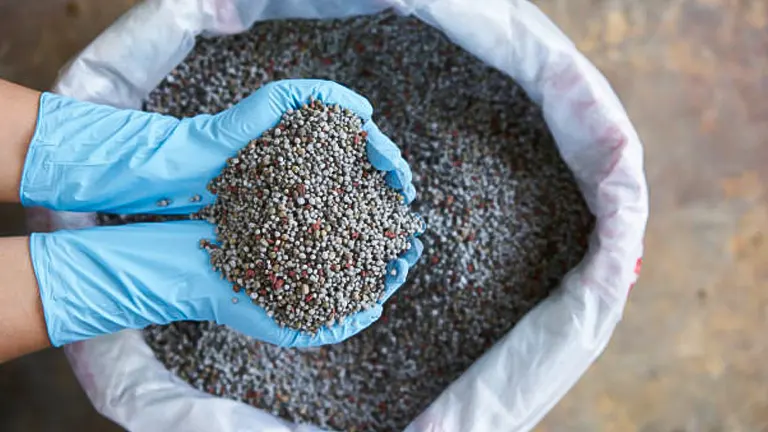
Choosing the right fertilizer for pecan trees involves understanding the complex interplay between soil health, tree nutritional requirements, and the specific characteristics of available fertilizers. Given the long lifespan and substantial nutrient needs of pecan trees, selecting the right type and formula of fertilizer is crucial for sustainable orchard health and productivity.
Nutrient Dynamics in Pecan Trees
Pecan trees require a balanced diet of macronutrients (N, P, K) and micronutrients (Zn, Mg, Fe) to support their growth phases, from leaf development to nut maturation. The high demand for nitrogen is particularly notable during the early growth stages and leaf development, which supports the tree’s ability to photosynthesize and, subsequently, produce energy for growth and nut development.
Phosphorus plays a pivotal role in root development and the energy transfer processes within the tree, vital for nut development and overall vigor. Potassium, meanwhile, contributes to water regulation, disease resistance, and the structural integrity of the tree.
Organic vs. Synthetic Fertilizers: A Comparison
Understanding the pros and cons of organic and synthetic fertilizers will enable better decision-making tailored to the orchard’s specific conditions and the grower’s goals.
| Fertilizer Type | Nutrient Release | Benefits | Considerations |
|---|---|---|---|
| Organic | Slow | Improves soil structure, enhances microbial activity, environmentally friendly | May require larger quantities, variable nutrient ratios |
| Synthetic | Fast | Precise nutrient ratios, immediate availability, smaller quantities needed | Can lead to salt buildup, less environmentally friendly |
Tailoring Fertilizer Selection to Pecan Trees
For pecan trees, selecting a fertilizer often starts with a nitrogen-heavy NPK ratio, such as 10-10-10 or 12-4-4, to support their extensive growth and development needs. However, this is just the starting point. Advanced orchard management involves tailoring fertilizer choices based on soil test results, which offer a detailed view of the soil’s existing nutrient levels and pH balance.
The Role of Soil Testing in Fertilizer Selection
Soil tests provide critical data that can guide the precise formulation of fertilizer required for an orchard at different growth stages. For example, if a soil test reveals a zinc deficiency—a common issue in pecan orchards—choosing a fertilizer with added zinc or applying a separate zinc supplement becomes a targeted intervention to correct this specific imbalance.
Unique Insights for Enhanced Fertilizer Selection
Incorporating advanced techniques such as leaf tissue analysis alongside soil testing can offer a more nuanced view of a tree’s nutritional status, providing insights beyond what soil tests alone can reveal. This approach allows for the adjustment of fertilizer strategies based on actual nutrient uptake by the trees, ensuring that fertilization practices are both effective and environmentally sustainable.
A Step-by-Step Guide on How to Fertilize Pecan Trees
1. Site Preparation
- Clean the Drip Line Area: Before fertilizing, remove any debris, weeds, or grass within the drip line of the tree. This area, marked by the outer circumference of the tree’s canopy, is critical as it’s where the feeder roots actively absorb water and nutrients.
- Conduct a Soil Test: Ideally, perform a soil test to understand the existing nutrient levels and pH. This will guide your choice of fertilizer and application rates.
2. Fertilizer Selection
- Choose the Right Fertilizer: Based on the soil test results, select a fertilizer that addresses the tree’s current nutrient needs. For general growth support, a balanced NPK ratio (e.g., 10-10-10) is recommended, but specific deficiencies may require different formulations.
- Consider the Formulation: Decide between granular and liquid fertilizers. Granular fertilizers are well-suited for broad application, while liquids can be more targeted.
3. Calculating Fertilizer Needs
- Determine Application Rate: The general recommendation is about 1 pound of actual nitrogen per inch of trunk diameter, measured at knee height. However, adjust this rate based on the soil test results and tree age.
- Calculate Total Fertilizer: Convert the nitrogen need to the total amount of fertilizer required, using the NPK ratio of your chosen product.
4. Application Techniques
- Granular Fertilizer Application:
- Measure out the required amount.
- Distribute evenly within the drip line, starting a few inches away from the trunk to avoid burn.
- Use a spreader for uniform application or apply by hand while wearing gloves.
- Water the area lightly to help the fertilizer penetrate the soil.
- Liquid Fertilizer Application:
- Dilute the fertilizer according to the manufacturer’s instructions.
- Use a sprayer to apply evenly across the drip line area.
- Focus on the root absorption zone, avoiding foliage to reduce the risk of burn.
5. Timing
- Schedule Fertilization: The best times to fertilize are in early spring before new growth begins and again in early summer to support nut development. Avoid late-season fertilization to prevent new growth that is vulnerable to frost damage.
6. Safety and Environmental Considerations
- Wear Protective Gear: When handling and applying fertilizers, always use gloves, eye protection, and a mask to avoid skin contact and inhalation of dust or chemicals.
- Follow Directions: Adhere strictly to the fertilizer manufacturer’s application instructions and safety warnings.
- Consider Environmental Impact: Use fertilizers responsibly to minimize runoff, which can contribute to water pollution. Consider organic options to support soil health and reduce chemical use.
7. Monitoring and Adjustment
- Observe Tree Response: After fertilization, monitor the tree’s health and growth. Look for signs of over- or under-fertilization, adjusting practices as needed.
- Annual Review: Repeat soil tests annually for commercial orchards or every 2-3 years for smaller operations to refine your fertilization strategy over time.
Fertilization Schedule: From Young Trees to Maturity
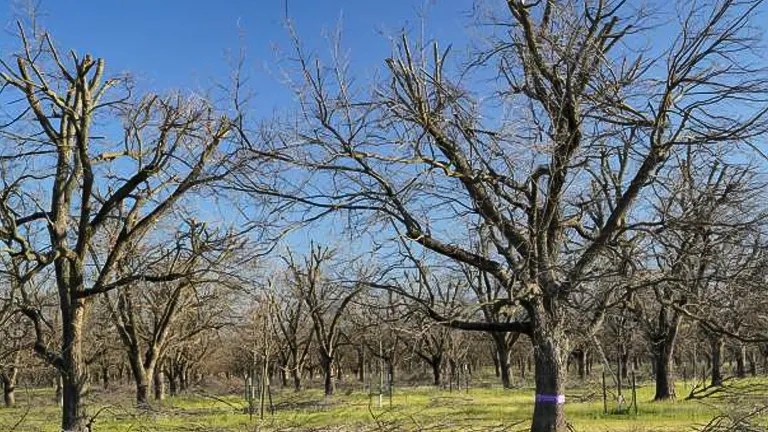
A strategic fertilization schedule is pivotal for nurturing pecan trees from their sapling stage to full maturity. For young trees, the focus is on establishing a robust root system and encouraging vigorous growth. During the first year, apply a light application of fertilizer after the tree has shown signs of new growth, usually a few weeks after planting. This encourages strong, healthy development without overwhelming the young tree.
As the tree matures, its nutrient requirements increase, particularly for nitrogen to support leafy growth and nut production. From the second year onward, incrementally increase the amount of fertilizer based on the tree’s growth rate and the soil’s fertility. A soil test every 2-3 years can guide these adjustments by revealing specific nutrient needs.
Seasonally, adjust your fertilization practices to accommodate the tree’s growth phases. In spring, a balanced NPK fertilizer supports new growth, while additional nitrogen applications in early summer can boost nut development. Always ensure that fertilization is aligned with rainfall or irrigation schedules to enhance nutrient uptake and prevent root burn.
Optimal Planting Practices
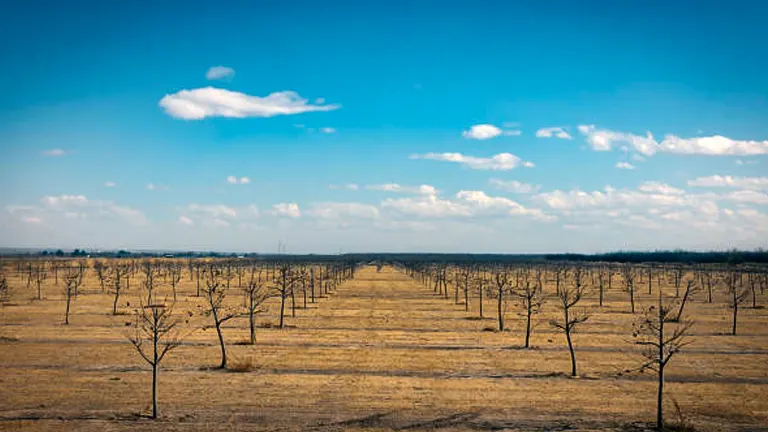
The establishment of a pecan orchard is a long-term investment that begins with thoughtful planning and precise execution of planting practices. The spacing between trees and rows is more than just a matter of fitting a certain number of trees per acre; it’s about optimizing the environment for each tree to thrive over the decades to come.
Scientific Foundations of Spacing
The spacing recommendations for pecan trees are grounded in their biology and growth patterns. Pecan trees are known for their large canopy spread and deep root systems, which are essential for their nutritional uptake and overall stability. Adequate space is critical not only for the physical growth of the trees but also for maximizing sunlight penetration and air circulation, which are vital for photosynthesis and minimizing disease pressure, respectively.
The optimal spacing is influenced by several factors, including:
- Varietal Characteristics: Different pecan varieties have varying canopy sizes and growth habits that affect how closely they can be planted.
- Soil Fertility and Water Availability: Richer soils with better water retention may support closer spacing by sustaining more vigorous growth.
- Orchard Management Goals: High-density planting may be suitable for operations focusing on early production with plans for later thinning.
Spacing Guidelines and Their Impact
Implementing precise spacing guidelines is crucial for balancing early productivity with long-term orchard health. Closer spacing can increase early yields but may necessitate future thinning to prevent overcrowding. Conversely, wider spacing supports longer-term growth without the need for thinning but may reduce early yields per acre.
Advanced Insights: Table of Spacing Guidelines
To illustrate the concept of optimal planting practices, the following table outlines recommended spacing guidelines, taking into account different objectives and conditions:
| Objective | Tree Spacing (feet) | Row Spacing (feet) | Trees per Acre | Notes |
|---|---|---|---|---|
| Early Production | 30 | 30 | 48 | High-density for early yields; may require thinning. |
| Balanced Approach | 40 | 40 | 27 | Balances early productivity with reduced thinning. |
| Long-term Sustainability | 60 | 60 | 12 | Maximizes tree health and longevity without thinning. |
Unique Considerations for High-Density Orchards
High-density planting is an increasingly popular strategy for accelerating early pecan production. This approach, however, requires meticulous management to mitigate the risks of increased disease pressure and nutrient competition. For high-density orchards, supplemental practices such as precise fertilization, regular pruning, and vigilant disease management become even more critical.
Innovative techniques, such as the use of dwarfing rootstocks and systematic pruning regimes, are being explored to optimize space usage and manage canopy develop
Pruning Techniques for Healthy Growth and Productivity
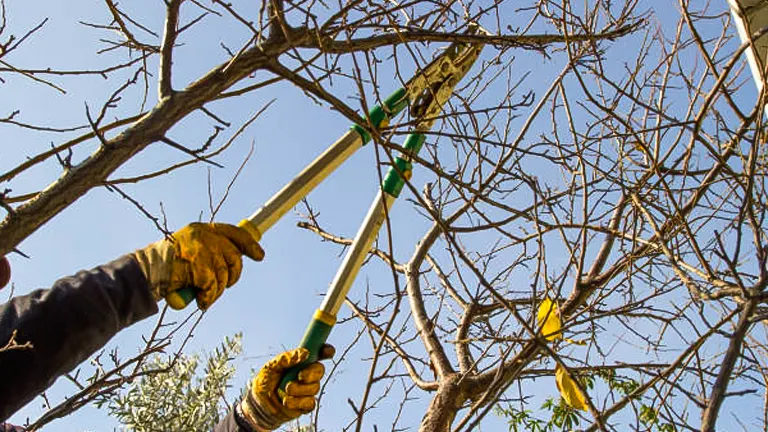
Pruning is an essential aspect of pecan tree care, serving multiple purposes: it removes dead or diseased wood, shapes the tree for better sunlight penetration and air circulation, and can even influence nut production by reducing overcrowding of branches.
- Timing: The best time to prune pecan trees is late winter before the sap starts to flow. This timing helps prevent sap loss and reduces the risk of infection.
- Techniques: Start with removing any dead, damaged, or diseased branches. Thin out crowded areas to improve light and air flow within the canopy, which is crucial for reducing disease pressure and promoting even nut maturation.
- Considerations: Be mindful not to over-prune; removing more than a third of the tree’s branches in a single year can stress the tree and reduce its productivity. Use clean, sharp tools to make clean cuts that heal quickly.
Pruning not only supports the health and longevity of the tree but also enhances the effectiveness of your fertilization efforts by ensuring that nutrients are directed towards the production of healthy new growth and nuts.
Common Fertilization Mistakes to Avoid
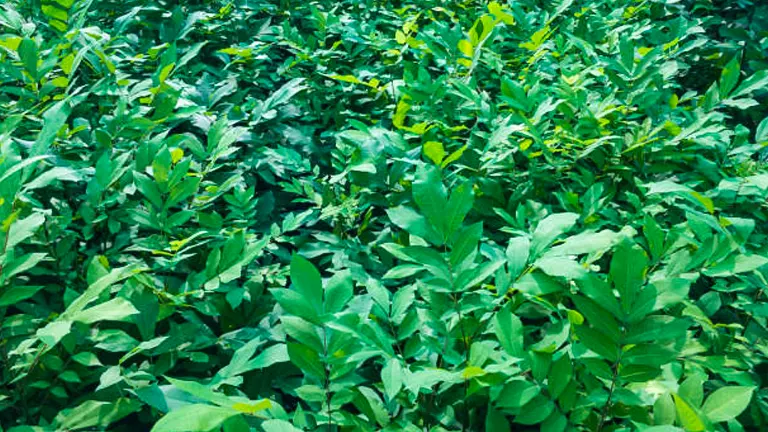
Achieving a thriving orchard requires not only doing the right things but also avoiding common pitfalls. Over-fertilization can lead to excessive leaf growth at the expense of nut production, potentially even harming the tree’s root system and overall health. Symptoms of over-fertilization include yellowing leaves, leaf burn, and weak, spindly growth.
Under-fertilization, on the other hand, starves the tree of necessary nutrients, leading to stunted growth and poor nut development. This is often visible as slow growth rates and reduced vigor.
Misinterpreting signs of distress can also lead to incorrect fertilization practices. Before adjusting your fertilization regimen, investigate other potential issues such as water stress, disease, or pest infestations.
Advanced Orchard Management Tips
Effective orchard management extends beyond basic fertilization and pruning. Advanced strategies focus on soil health, micronutrient balance, and adopting organic practices where possible, ensuring your pecan trees are healthy and productive for years to come.
- Soil Testing and Adjustment: Regular soil testing is indispensable for understanding the specific nutrient needs of your orchard. Tests can reveal not only NPK levels but also pH and micronutrient concentrations. Adjusting soil pH, for example, can significantly affect nutrient availability. Lime can be added to increase pH in acidic soils, while sulfur can lower pH in alkaline conditions, optimizing nutrient uptake.
- Micronutrient Supplementation: While nitrogen, phosphorus, and potassium are the primary nutrients for pecan trees, micronutrients like zinc, magnesium, and iron play critical roles in tree health and nut production. Zinc, in particular, is often deficient in pecan trees, leading to poor leaf development and reduced nut size. Foliar sprays of zinc sulfate can correct this deficiency, especially when applied in early spring as leaves emerge.
- Organic Fertilization Practices: Integrating organic practices into your orchard management can improve soil health and tree vitality. Composting organic matter not only adds nutrients but also improves soil structure, water retention, and beneficial microbial activity. Mulching around the base of pecan trees suppresses weeds, conserves moisture, and gradually adds organic matter to the soil as it decomposes. Organic fertilizers, such as composted manure or fish emulsion, provide a slow-release nutrient source that supports steady growth without the risk of nutrient burn associated with synthetic fertilizers.
Related Post
- How to Fertilize a Mango Tree Effectively: Tips and Tricks for Healthy Growth
- How to Fertilize Apple Trees: Essential Tips for a Bountiful Harvest
- How to Fertilize Lemon Trees: Secrets for Thriving Citrus
- How to Fertilize Avocado Tree: A Step-by-Step Guide for Lush Growth
Conclusion
The path to a thriving pecan orchard intertwines careful fertilization with diligent orchard management practices. By understanding the unique needs of pecan trees and responding with precise timing, appropriate fertilization, and regular care, you can ensure your orchard remains healthy and productive. Remember, the keys to success are observation, adaptation, and a commitment to learning. Each tree has its story, told through its growth, leaves, and the fruit it bears. Listening to these stories and responding with informed care will lead to bountiful harvests and the profound satisfaction of nurturing nature.
FAQs
- What’s the best time of year to fertilize pecan trees?
Pecan trees should be fertilized twice a year for optimal growth. The first application should occur in early spring (late February to early March) as the soil begins to warm, and the second in early summer (May to June) to support nut development. Avoid fertilizing after August to prevent promoting new growth that could be damaged by early frosts. - How do I determine the right amount of fertilizer for my pecan tree?
A general guideline is to use approximately 1 pound of actual nitrogen per inch of trunk diameter, measured at knee height. However, the exact amount can vary based on soil fertility, tree age, and health. Conducting a soil test can provide more precise recommendations. - Can I use the same fertilizer for young and mature pecan trees?
While young and mature pecan trees have similar nutrient requirements, younger trees may benefit from a fertilizer with a slightly higher nitrogen content to support their rapid growth. Adjust the application rate based on the tree’s age and size, with younger trees typically requiring less fertilizer. - Is it better to use organic or synthetic fertilizers for pecan trees?
The choice between organic and synthetic fertilizers depends on personal preference, availability, and specific orchard needs. Organic fertilizers improve soil structure and are environmentally friendly but may need to be applied in larger quantities. Synthetic fertilizers provide nutrients in more precise, readily available forms but can lead to salt buildup over time. - How should I apply fertilizer to my pecan tree?
Fertilizer should be spread evenly within the drip line of the tree, avoiding direct contact with the trunk to prevent burn damage. For granular fertilizers, use a spreader or scatter by hand, followed by light watering. If using liquid fertilizer, dilute as recommended and apply with a sprayer, focusing on the root absorption area. - What are the signs of over-fertilizing a pecan tree?
Over-fertilizing can lead to excessive leaf growth at the expense of nut production, yellowing leaves, leaf burn, and potentially damage to the root system. If you notice these signs, reduce the amount of fertilizer and consult a local extension service for advice on remediation. - Can mulching affect how I fertilize my pecan trees?
Yes, mulching can impact fertilizer application. Mulch helps retain soil moisture and gradually adds nutrients as it decomposes. However, it can also absorb some of the fertilizer, requiring slight adjustments to application rates. Apply fertilizers slightly beyond the mulched area to ensure nutrients reach the soil. - How often should I test the soil in my pecan orchard?
Soil testing is crucial for effective fertilization and should be conducted every 2-3 years for small operations or annually for commercial orchards. Regular testing helps monitor nutrient levels, pH balance, and informs adjustments to your fertilization regimen for optimal tree health and productivity.
This guide was designed to equip you with the critical steps for properly fertilizing your pecan trees, paving the way for vigorous growth and abundant harvests. With this knowledge in hand, you are prepared to take your pecan orchard to the next level. Here’s to an orchard filled with thriving, productive pecan trees!
Dive deeper into expert gardening strategies by exploring our comprehensive guides, uncover our top picks in the best section, and gain detailed insights through our product reviews.

Benjamin Brooks
Forestry AuthorGreetings! I'm Benjamin Brooks, and my journey over the past 15 years has revolved around the fascinating realms of content creation, expertise in snow clearing, and the intricate world of lumberjacking and landscaping. What began as a simple curiosity about the natural world and heavy machinery has evolved into a passionate profession where my love for crafting words intertwines seamlessly with my lumberjacking and garden skills.













Leave your comment